This post contains affiliate links.
As a seasoned backyard chicken owner, I understand that the heart of a thriving flock is their well-being and health. Chicken welfare transcends mere survival. It encompasses the physical, mental, and emotional happiness of our feathered friends
In this article, I will delve into the fundamentals of backyard chicken health and welfare, exploring how proper nutrition, safe housing, disease prevention, and compassionate care converge to form the cornerstone of the chickens’ happiness and longevity. Together, we will discover the essentials of creating a nurturing habitat for our beloved backyard companions.
What Is Needed for the Optimal Welfare of Backyard Chickens?
When considering the welfare of backyard chickens, understanding and meeting their needs is crucial to ensure their health and prosperity. A chicken’s welfare directly impacts their physical well-being, behavior and quality of life.
A fundamental aspect of backyard chicken care is to consider the hens’ environment. A spacious coop and a secure run are essential to give them room to exhibit natural behaviors and protect them from predators. Also vital to their welfare is a proper shelter to shield the chickens from harsh weather elements.

It’s ready to house my five pullets. This is a fantastic urban coop!
Nutrition plays a key role in maintaining the welfare of your chickens. A balanced diet rich in nutrients helps to keep the hens healthy and to ward off various diseases.
Offering mealworms benefits the chickens twofold. It provides a scrumptious treat that they cannot ignore and at the same time provides a high source of protein to help with egg production and with feather rejuvenation when they are molting.
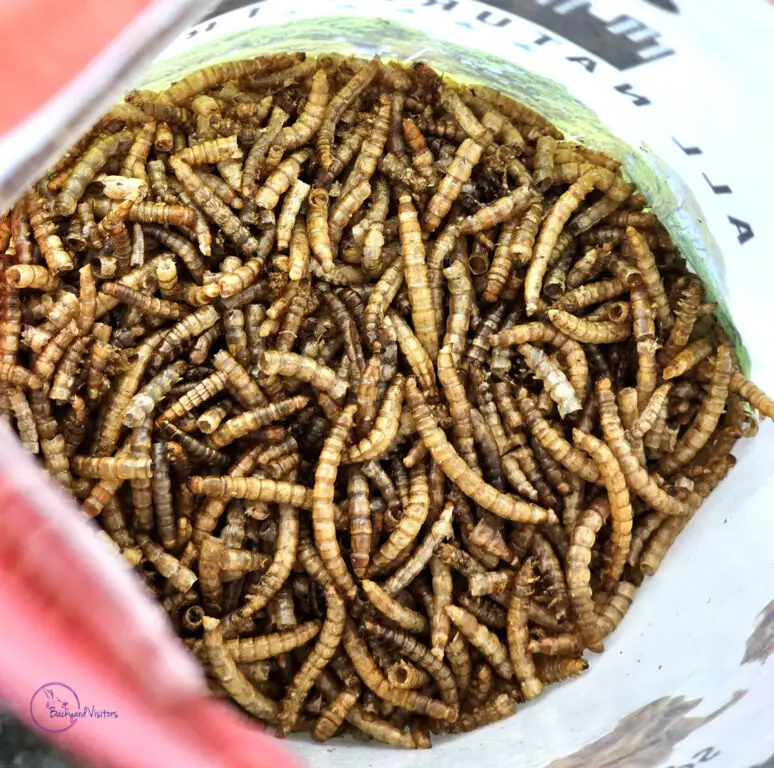
All I have to do is shake the container, and they come running!
The availability of clean fresh water is vital at all times, since dehydration quickly compromises a chicken’s health.
My chicken coop incorporates a watering system that holds enough water to last my five chickens for a few days. It features a “drip-demand” nozzle that my chickens learned how to operate almost immediately. I never have to deal with my chickens turning over their water supply and making a mess or spilling all of their drinking water on the ground. This watering system does not take up floor space as most watering stations do since the water reserve rests above the coop for easy filling.
To ensure the optimal welfare of hens, it is imperative to provide enrichment, such as perches, dust baths, and foraging opportunities. These activities help prevent boredom and stress in chickens, contributing to better welfare practices.
I built my chicken run out of metal fence posts and horizontally attached 4’ x 8’ redwood lattice panels. Oftentimes I attach a mature sunflower or a cluster of grapes to the fencing for their pecking pleasure and it also keeps them entertained.
Inside the run I built a simple dust bathing area using square concrete blocks purchased at the local garden store. I then filled it with a dirt/sand mixture for dust bathing. They enjoy basking in the sun while dust bathing and love it.
I also placed a bail of hay and a dead tree limb on its side to provide multiple perching places with different heights for them to investigate. They peck at the hay and as the hay deteriorates and composts, it attracts bugs which the hens love to scratch, chase and consume. They love that as well.
Regular health checks are a part of thorough chicken care and should never be overlooked. Monitoring your chickens for signs of illness or distress is a proactive way to preserve their welfare. It is also important to maintain a regular deworming and vaccination schedule, if applicable, to prevent parasites and diseases that threaten the welfare of your flock.
Fostering a calm and gentle relationship with your chickens, through regular, careful handling positively affects their welfare and reduces fear and stress.
My chickens and I have developed a strong bond and they are always happy to see me. Even though their chicken run is not visible to the driveway, they can identify my car sound when I pull into the driveway and they will call to greet me. They do not do that when I arrive home in another car.
Read my article: Pet Chickens 101: Everything You Need to Know
Social dynamics and understanding chicken behavior is essential to enhance the welfare of the flock. Observe your chickens to detect any signs of bullying or aggression and take steps to mitigate these issues. Hens are social creatures and thrive in groups; thus, having a well-established pecking order helps to minimize conflicts.
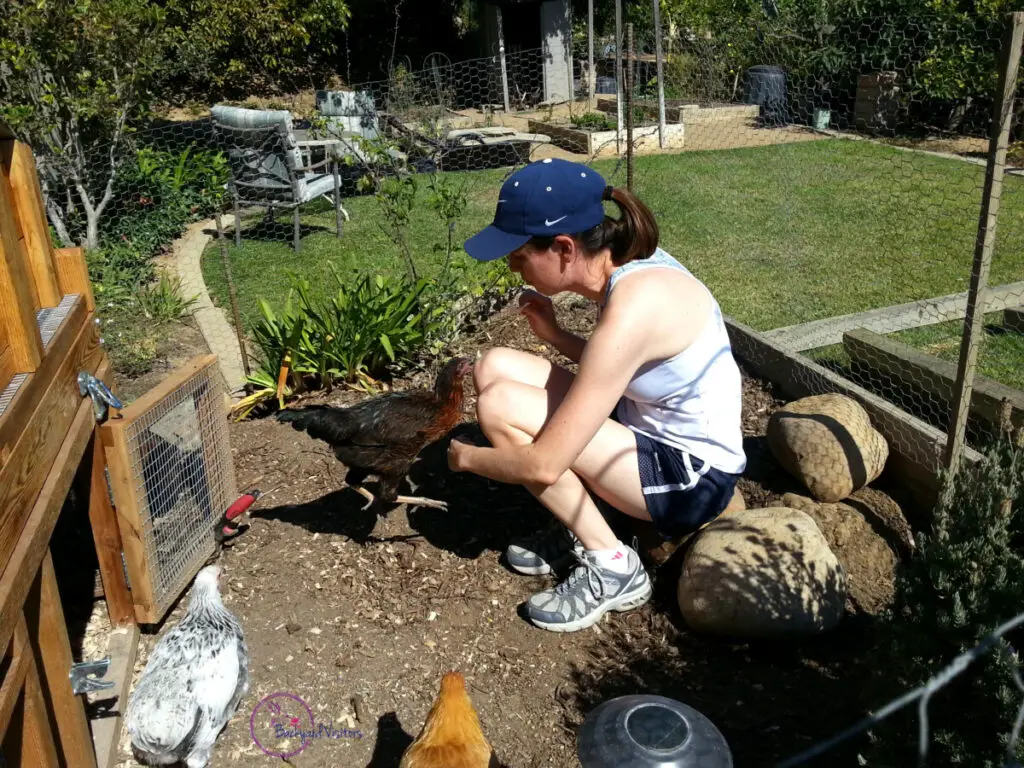
They are not pullets anymore, and they get along just fine,
but there is still a pecking order!
It is easy to identify the social pecking order in my five chickens. The top of the pecking order is the most dominant and she lets the rest of the flock know by pecking at the underlings to step aside when it is feeding time, dust bathing or roosting time to name a few. From the viewpoint of an outsider, this behavior is distressing, however, every chicken in that pecking order is subsequently put in its place below them.
The most obvious sign of bullying is the absence of feathers on the bullied chicken’s buttock area. As the feathers are plucked, red dots of blood appear from the feather extraction, and that seems to intensify that pecking behavior. The chickens are attracted to the color red, therefore any blood droplets compel them to continue to peck.
Bullying also is demonstrated in more subtle ways such as access to lay boxes. The dominant chicken wanting to lay an egg will sit on top of another less dominant chicken already in the midst of laying an egg. This makes it uncomfortable to the point that the less dominant chicken will relocate to another laying box to complete her laying of an egg.
Subtle social pecking order nuances are observed as I note that the most dominant hen is the last one who enters the roosting area for the night. She chooses her ideal location and simply pecks the one in the way to move. The hen that is pecked quietly complies. Pecking order at its best!
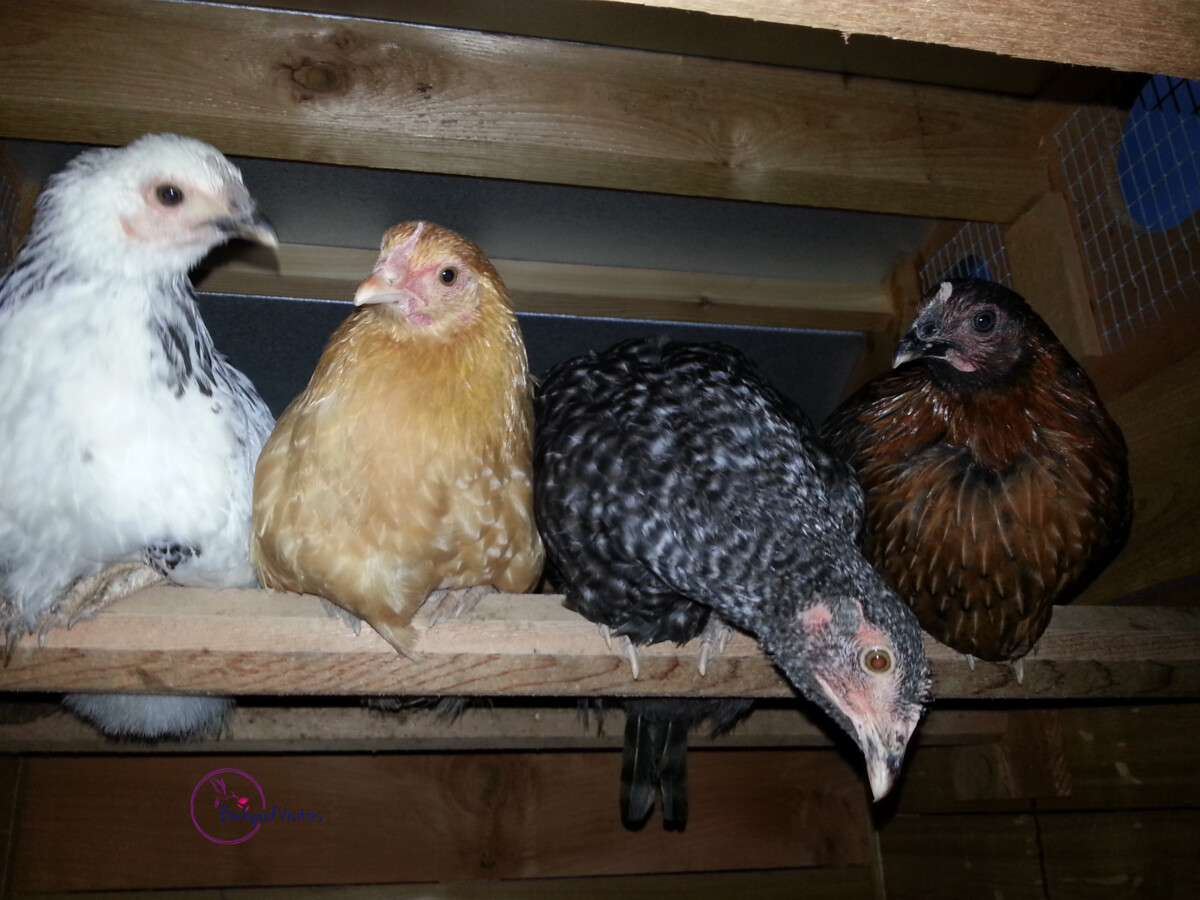
Cuckoo Maran (Duckey), and Ameraucana (Molasses)
My chicken coop provides two roosting bars so that all of my chickens have ample room to stretch their wings, and feel comfortable when resting and sleeping. Carmel (Buff Orpington) is my dominant chicken and she is the last one to roost for the night.
Assuring the welfare of backyard chickens is a rewarding endeavor that requires attention, patience, and genuine care for the animals. The right approach creates a thriving environment that supports the welfare of every hen in your care.
Read my other related articles:
- The Beginner’s Guide to Raising Backyard Chickens
- 7 Reasons Why Raising Chickens in Your Backyard is a Great Idea
- How Much Space Do You Need to Raise Chickens
- What to Know Before Getting Your First Backyard Chicken
- The Top 5 Chicken Breeds for Your Backyard
- The Environmental Benefits of Raising Backyard Chickens
Essential Chicken Care: Maximizing Health and Welfare for Hens
When I address chicken care, it is paramount to understand that it is the cornerstone of chicken welfare. Spending time in your backyard tending to your flock is not just a hobby; it is a commitment to ensure the optimal health and happiness of your chickens.
The care we provide lays the foundation for their well-being, influencing everyday aspects of their lives. A chicken’s health is closely linked to the care they receive. Healthy chickens provide the added benefits of better quality eggs and are more robust and disease resistant.
Care for your chickens begins with providing a safe, predator-proof coop. Chickens require shelter that protects them from the elements and offers them the security they require to rest without stress.
My chicken coop is placed on a concrete slab to ensure that predators are not able to dig beneath the coop to gain access. Because of this I felt obligated to provide them with a dirt-based run that is also protected to allow them the opportunity to stretch their wings and exercise, take dust baths for hygiene and to scratch and find insects to consume for extra nutrition to secure a balanced diet.
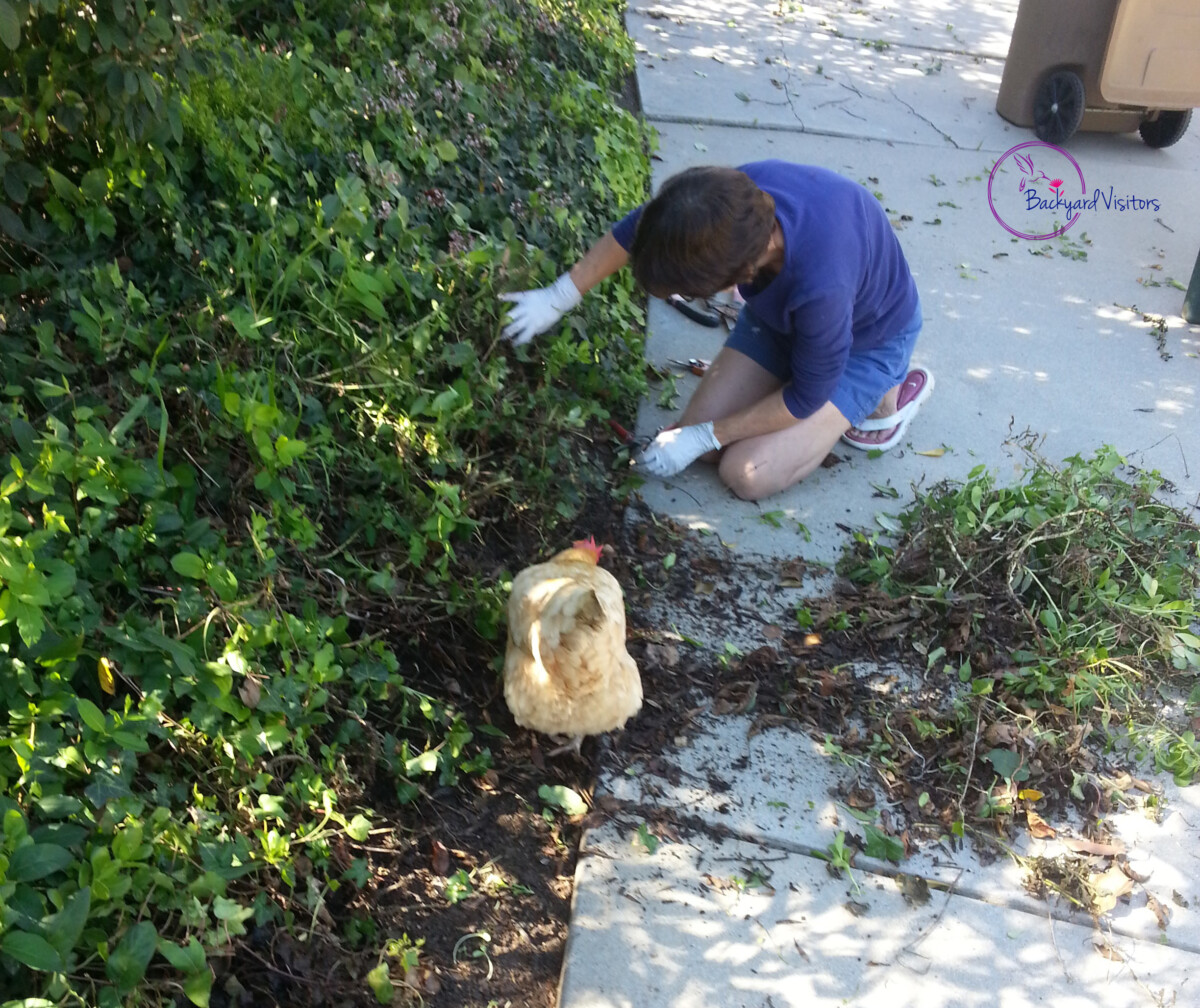
as mom cleans up the driveway edge.
My chickens are released to roam freely under my supervision while I work in my garden. They love to scratch and pick the bugs off of the plants in my raised bed garden. Even while supervised, they occasionally peck at my plants and love to eat the lettuce. They know they are not supposed to eat my plants since I trained them simply by saying “No, No”. However, they like to push the limits of acceptability and will make attempts to peck at that one extra piece of lettuce before running away. The interactions that I have with my chickens establishes a bond so that when I call them to return back to their coop, they respond.
My chickens really like mealworms. If I need to call them back into the run or coop I shake the mealworm container and they come running.

All I have to do is shake the container, and they come running!
Clean water, a mix of grains, proteins, and necessary vitamins ensures that your chickens are getting nutrition to support their health and productivity.
Care also means regular check-ups for parasites and ailments, as preventative health measures are an indispensable part of chicken care.
Mental stimulation is another aspect often overlooked in chicken care. Chickens are inquisitive creatures by nature and benefit immensely from an environment that encourages their natural behaviors, such as scratching, foraging, and dust bathing, all essential behaviors for maintaining good chicken health.
My chickens enjoy all these natural behaviors. They especially love the days when I turn my compost. They know when the compost lid is opened and they will scratch through it for hours searching for grubs, earwigs and any other morsels of deliciousness.
In the realm of chicken care, routine is king. Chickens thrive on consistency, with regular feeding, cleaning, and roosting schedules setting the basis for excellent welfare. A disruption in their routine causes stress, affecting their health and diminishes their productivity.
Regular observation of the flock builds a baseline and keen sensitivity as to what is normal behavior in your flock so that potential health issues are addressed before they escalate. This shields your chickens from unnecessary suffering and helps maintain the harmony of your backyard ecosystem.
For example, when my chicken’s combs are bright red, their hormones are in full gear and I know to expect increased egg production. On the other hand, when I see multiple feathers on the ground, that is key that molting season is commencing and it is time for me to increase their protein intake to help them form new pin feathers which will bloom into gorgeous and vibrant new feathers.
There are tangible and intangible benefits that accompany diligent chicken care. Our animals enjoy a high standard of living and as a seasoned chicken owner the joy and satisfaction I derive from seeing my chickens healthy, active, and content is immeasurable. It is the ultimate reward for our dedication of putting their health and welfare at the heart of our care practices.
Below is a list of favorite foraging bugs for backyard chickens:
- Earthworms
- Crickets
- Mealworms
- Grasshoppers
- Ants
- Spiders
- Beetles
- Caterpillars
- Snails
- Moths
- Fly larvae
- Slugs
- Aphids
- Termites
- Japanese beetles
What Is the Impact of Chicken Welfare on Poultry Health?
When addressing chicken welfare, I am delving into the essence of what makes for a healthy and happy flock. Good welfare practices are the cornerstone to ensure the overall health and welfare of backyard poultry.
A thriving bird is a product of meticulous care and attention to their welfare needs. The health and welfare of chickens are tightly interwoven. Neglect in welfare leads to compromised health, initiating a ripple effect from individual birds to potentially the entire flock.
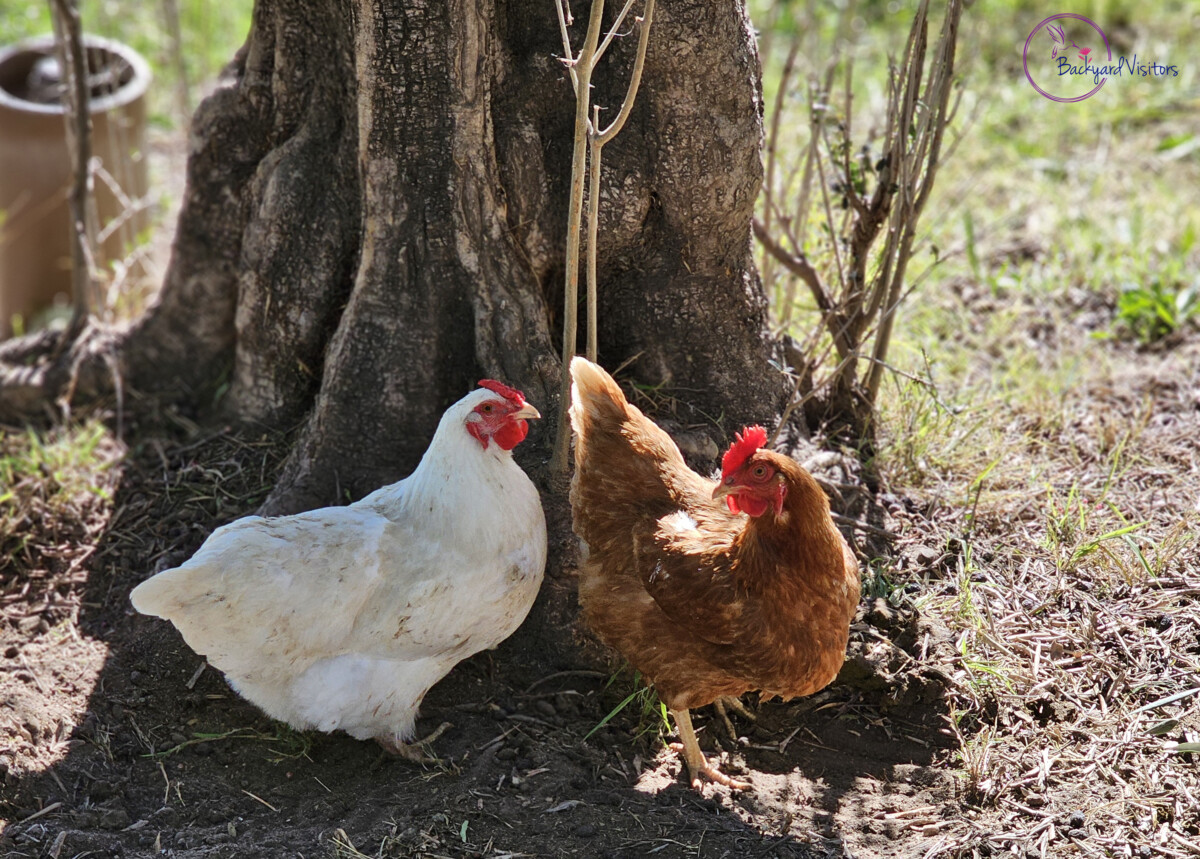
In the broader scope of comparing backyard chicken keepers to the chicken industry, where broiler chickens are raised for meat, welfare standards are spearheaded by organizations such as the Chicken Council to control the welfare of chickens raised commercially.
These guidelines are designed to make sure that broiler chickens, even at a commercial level, receive the necessary care that paves the way for robust health and productivity. The chicken industry has observed that birds raised in better welfare conditions exhibit enhanced growth, fewer illnesses, and better overall health, which spells out clear benefits for both the chickens and the producers.
When addressing the health and welfare of our backyard poultry, it is imperative to provide an environment that promotes their physical and psychological well-being. Ensuring optimal welfare includes appropriate shelter, access to fresh water and nutritious food, adequate space for natural behaviors, and prevention of disease and injury. This creates an enriching, thriving habitat. The welfare of poultry is an ongoing commitment to our feathery friends.
Adopting welfare standards that bring out the best in our birds, is investing in their health, which in turn pays us back in numerous benefits. Healthy chickens mean a vibrant and productive flock, whether we are raising hens for eggs, broiler chickens for the table, or simply enjoying the pleasures of keeping poultry.
Welfare is a lifelong approach to poultry care that reverberates through every aspect of their lives. The well-being of our chickens is a measure of the care and respect we afford these wonderful creatures. Consider chicken welfare a practice and a philosophy that ensures the health and happiness of our backyard companions. After all, they do become our pets, intentional or not.
Hen Welfare: Ensuring Suitable Companionship in Poultry Flocks
The role of companionship is significant when considering the welfare of our feathered friends. Hens are social animals and thrive in environments where they interact with their flock mates.
Ensuring optimal hen welfare in your backyard chicken setup involves meeting these inherent social needs alongside other essential animal welfare requirements. A flock that enjoys each other’s company is happier and healthier. They engage in natural behaviors, establish pecking orders without undue stress, and fully express their natural character.

Animal welfare is also about the societal structure and companionship provided within the flock and are equally foundational to their overall welfare. While observing your hens, notice that they form close bonds and engage in preening each other, a sign of comfort and trust. Whether dust-bathing together or roosting side by side, these are moments that reflect the deep-rooted companionship that is vital to their welfare.
When a chicken is lost or introduced for any reason, the dynamics of the flock changes causing stress. A whole new pecking order must be established which is stressful. During this process pecking behavior escalates as each chicken pushes their dominance in the flock. During this transition, feathers are lost and blood spots become prevalent which in turn encourages more pecking and the cycle continues until a consensus of dominance is established either by the help of the chicken caregiver or the injury of a chicken.
When introducing new birds, it is essential to integrate them carefully to maintain the flock’s welfare. Not all hens get along immediately, and the introduction process is stressful without proper management. It is all part of the fascinating world of animal behavior. As a seasoned poultry keeper, it is my responsibility to facilitate these introductions, ensure a seamless transition to support the well-being of each individual bird thereby the entire flock.

in a stare-down competition through the fence!
As a social animal, the welfare of each hen dramatically impacts the health of the entire flock. Stressed or lonely chickens are more prone to illness, which quickly affects other flock members. By providing adequate space, environmental enrichment, and opportunities for socialization, I foster a thriving community for my hens. This in turn promotes a positive environment, conducive to the welfare and longevity of my chickens.
When discussing hen welfare and flock management, it is paramount to recognize the inherent social needs of these animals. Companionship is a pillar of chicken welfare, and as dedicated guardians of these animals, the goal is to always strive to enhance their social well-being alongside their physical health.
Happy hens are the hallmark of conscientious and knowledgeable chicken owners who value the welfare of their flock as much as their own enjoyment in backyard poultry keeping.
Understanding the Nutrition: Feed Practices to Support Chicken Welfare
Proper nutrition is the underpinning of backyard chicken welfare. Understand the diverse dietary needs of your chickens to ensure their health and happiness.
Poultry nutrition is not static. It evolves with the life stages of your chickens. The cornerstone of sound nutrition for chickens is a balanced diet that supports overall vitality.
Chicks have different feed requirements compared to mature laying hens or those that are molting, and a seasoned backyard chicken owner knows to cater to these changes.
For laying hens, these requirements are heightened due to the additional nutrients needed for egg production. The right feed not only supports the welfare of your hens but also the quality of the eggs they produce. When considering feed, one must account for the necessary proteins, vitamins, and minerals that promote robust health in poultry.
Lay mash, lay crumble and lay pellets are different types of feed that is specifically formulated for laying hens to support optimal egg production.
Lay mash feed is finely ground and contains a balanced mix of nutrients, including proteins, vitamins, minerals, and carbohydrates, essential for the health and productivity of egg-laying poultry. The protein content is adjusted to meet the higher demands of laying hens, which need additional protein to produce eggs regularly.
Vitamins such as vitamin D and calcium are also crucial in lay mash feed to ensure strong eggshell formation. The mash form makes it easier for the chickens to consume and digest, allowing for better nutrient absorption. It is part of a carefully managed diet to maintain the hens’ health and maximize their egg-laying capabilities.
Lay crumble for chickens is another form of feed tailored for laying hens, much like lay mash, however it comes in a crumbled texture instead of a fine powder. This feed is designed to provide all the essential nutrients needed for hens to lay eggs efficiently and maintain their health. The crumbled form is easier for some chickens to eat and can reduce feed waste, as it is less likely to be blown away or scattered compared to finer feeds.
Lay pellets for chickens are a type of feed specifically formulated for laying hens, similar to lay mash and lay crumble but in pellet form. These pellets are created by compressing the feed ingredients into a compact, cylindrical shape, which makes the feed easy to handle, distribute, and store.
The pellet form minimizes waste, as it is less likely to be scattered or blown away, and can also reduce selective eating behaviors seen in chickens, ensuring they get a balanced intake of nutrients with each peck. The process of pelleting the feed also aids in the digestion and absorption of the nutrients by the chickens, making it an efficient way to feed laying hens.
Feed quality directly impacts chicken health and welfare. If your chickens are not receiving adequate nutrition, signs of poor welfare emerge, such as reduced laying rates or a weakened immune system. Thus, ensuring the welfare of your chickens begins with a deep understanding of the composition of their feed.
Be it commercially prepared feed or a mix of grains, seeds, and supplements you prepare, remember to make sure it meets the specific needs of your poultry. It is clear that good nutrition is fundamental to the welfare equation, especially when we consider the impact of welfare on poultry health.
Companionship is essential for chickens since they thrive on an actual pecking order.
Synergy between good nutrition and a fulfilling social environment is crucial to the welfare of poultry. By continuously sharpening our understanding of poultry needs and refining our feed practices, we will manifest a profound respect for the welfare of the chickens in our care.
Ultimately, chicken welfare is a comprehensive approach that indeed starts with the basics of nutrition but blossoms into all aspects of their lives, and as responsible supporters of backyard flocks, it is our privilege to provide that unyielding support.
Chicken Health Certificates: The Role of ASPCA & Animal Welfare Standards
Crucial to the welfare of backyard chickens is to recognize the important role of chicken health certificates in advocating for their well-being. These certificates, often backed by the American Society for the Prevention of Cruelty to Animals (ASPCA) and embedded within the rigorous animal welfare standards, signify a level of care and management that benefits our beloved feathered friends.
As a steadfast guardian of my own laying hens, I am always reassured when I learn that these practices are being upheld to ensure the welfare of chickens across the backyard and beyond.
The ASPCA, a renowned advocate for animals, supports the welfare of laying hens by endorsing protocols that aim to maintain both their physical and psychological health. Moreover, the National Chicken Council (NCC), a key player in poultry health, developed guidelines that serve to inform and improve how chickens are raised, with a keen focus on welfare.
Adhering to these standards is a commitment to elevating the life quality of every chicken under one’s care. It is about understanding their basic needs and going a step further to provide an environment where they will thrive.
There are health benefits with adhering to these welfare standards. When chickens are raised in accordance with stipulated animal welfare standards, there is a drop in health issues and a rise in their longevity and productivity, especially in laying hens. This means happier chickens and more eggs creating a win-win situation for both the backyard farmer and their flock.
Of course, obtaining these coveted chicken health certificates is not just a matter of going through the motions; it is about being thoroughly committed to the hens’ welfare, ensuring they lead stress-free lives with access to fresh air, ample space, and proper nutrition.
The NCC standards do not just stop at health; they encompass the whole spectrum of chicken welfare. These standards are about fostering an environment where chickens can engage in natural behaviors, with guidelines that are constantly revised to adapt to new research findings.
In essence, the pursuit of chicken welfare is an on-going journey, intertwined with the health of the chickens and the joy they bring to our backyards. As seasoned chicken enthusiasts, adhering to these animal welfare standards is both beneficial and our responsibility. Annually, these practices ensure the evolution of a baseline for basic care, leading us all towards a brighter future for our backyard poultry friends.
Below is an ASPCA and NCC list of the top 11 recommendations
that promote backyard chicken welfare:
- Provide a safe, predator-proof environment with adequate space for each bird. The American Society for the Prevention of Cruelty to Animals (ASPCA) recommends at least 10 square feet per chicken outside and a minimum of 2 to 3 square feet per chicken inside the coop. (I provide a minimum of 5 square feet each for my chickens.)
- Ensure the coop is well-ventilated, dry, and kept clean to prevent respiratory issues and the spread of disease. Regular removal of waste and soiled bedding is necessary.
- Supply a balanced, nutritious diet appropriate for the chickens’ age and breed, and provide fresh water at all times. The National Chicken Council (NCC) emphasizes the importance of proper nutrition for overall health.
- Offer enrichment such as perches, nests, and dust bathing areas to allow for natural behaviors. These features help reduce stress and prevent behavioral problems.
- Protect chickens from extreme weather conditions by providing a climate-controlled environment or appropriate shelter to avoid heat stress or hypothermia.
- Monitor the flock regularly for signs of illness or injury, and provide prompt veterinary care as needed. Prevention and early detection of health issues are critical for the welfare of backyard chickens.
- Practice biosecurity measures to prevent the introduction and spread of infectious diseases. This includes restricting access to the coop, using footbaths, and controlling vermin.
- Implement a regular vaccination program as recommended by a veterinarian to protect the flock against common diseases.
- Provide adequate lighting. Chickens require a certain amount of light for health and egg production. Artificial lighting should be used judiciously to supplement natural light without causing stress.
- Allow for social interaction among the flock while also providing enough space to prevent overcrowding. Chickens are social animals and should be kept in groups, but overcrowding can lead to stress and aggression.
- Familiarize yourself with local regulations regarding the keeping of backyard poultry and ensure compliance with all laws and ordinances.
Creating a Welfare-Centric Environment for Chickens
To truly embrace a welfare-centric perspective for raising backyard chickens, ensure that their environment closely mirrors their natural needs and allows them to exhibit free behaviors that are essential to their well-being.
The cornerstone of a welfare-centric environment for chickens is freedom. Freedom to roam, scratch, peck, and forage is not just a luxury, but a necessity for chickens to live fulfilling and healthy lives.
When my chickens see me in the backyard they can not wait to get out and join me in my travels around the yard. They are like a group of little puppies, following me everywhere in anticipation of a new adventure.
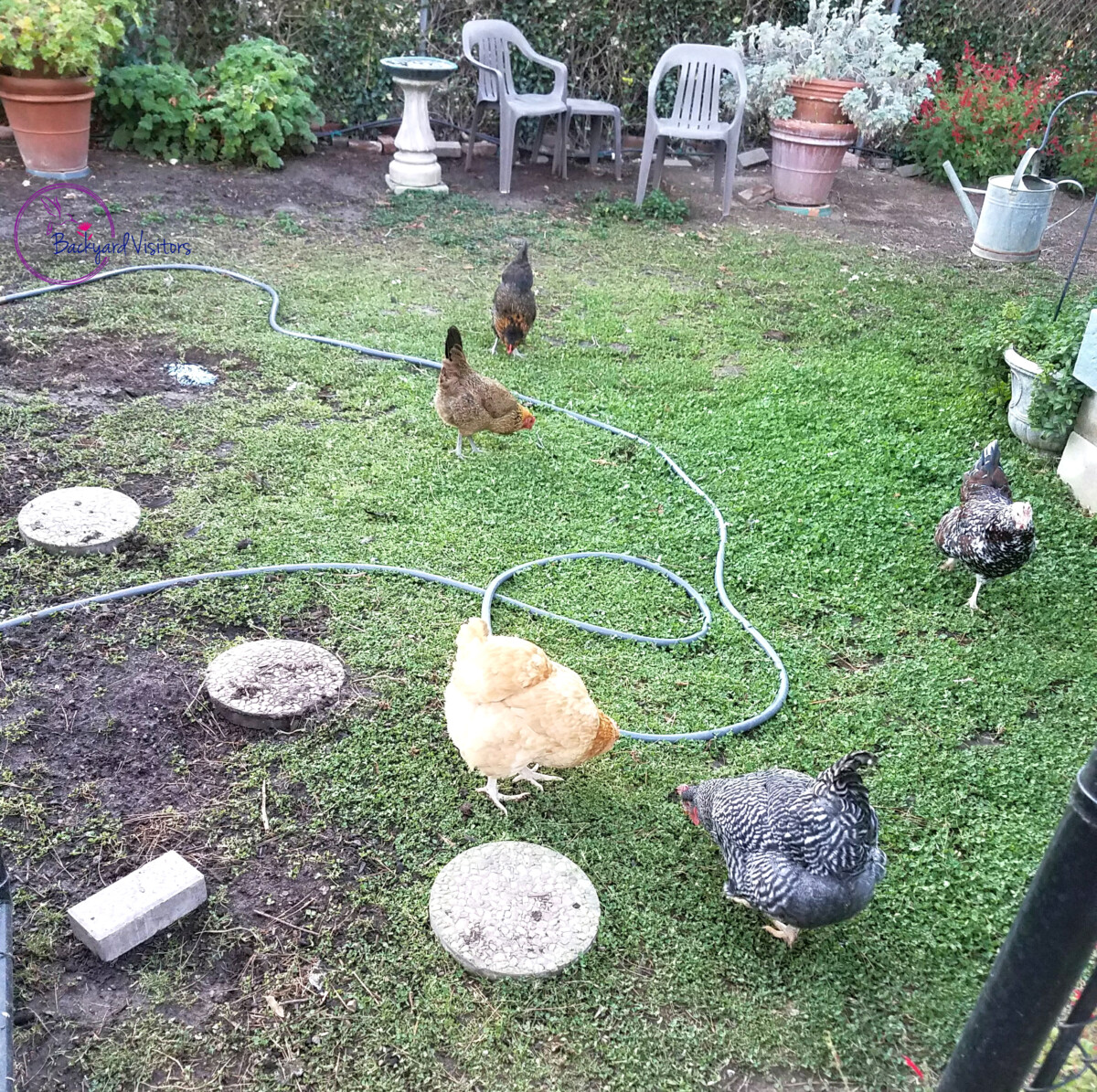
When designing their living space, think natural. Incorporate elements such as dust baths, perches, and a variety of textures and materials that encourage exploration and mimic a chicken’s natural habitat.
Not only should chickens feel free to express their behaviors, but their environment should also be free from stressors such as predators, extreme weather, and overcrowding.
A coop free from drafts and provides ample space for each bird reduces stress and promotes healthier, happier chickens. However, a chicken’s welfare is not served in an air-tight coop. The coop must have some ventilation, therefore a good coop will not be draft-free, just draft-controlled.
In the summertime adequate ventilation is critical, as a too-hot coop is life-threatening. They are more cold-tolerant than heat-tolerant.
Just as important is the freedom from hunger and thirst, therefore a consistent supply of fresh water and a balanced diet are vital for maintaining optimal health. Similarly, being free from discomfort, by providing a clean, dry, and safe place to live is paramount when striving for a welfare-centric approach.
When addressing the natural inclinations of chickens, a natural environment is one where chickens bathe in the sun, breath fresh air, and stretch their wings. Allowing chickens free range access, where possible, lets them engage in these natural behaviors, crucial for their welfare.
By understanding what is natural for chickens, create an environment where they live as closely as possible to how they would in nature. To sum it up, a true welfare-centric environment for chickens is one where their natural behaviors are not just permitted but encouraged. It is a setting that is free from harm and abundant in opportunities for chickens to be chickens.
Integrating a welfare-centric mindset into your chicken-rearing practices leads to more contented chickens and will also be a free lesson in the joys of watching these fascinating creatures flourish. Remember, happy chickens lead to a vibrant, productive flock, and that is something to strive for in every backyard coop.
Check out my other posts on Backyard Chickens
Frequently Asked Questions
Q: What are the fundamental aspects of chicken welfare in a backyard setting?
A: The fundamentals of chicken care focus on creating a safe living environment, providing balanced nutrition, ensuring regular health checks and disease prevention, and fostering a positive social structure. A spacious, predator-proof coop, access to clean water and a balanced diet, opportunities for natural behaviors like dust bathing, and observing a well-established pecking order contribute to the overall welfare of your flock.
Q: How does proper nutrition affect the welfare of my backyard chickens?
A: Proper nutrition is crucial because it directly supports your chickens’ health, productivity, and immunity. A balanced diet specially formulated for their life stage supports egg production in laying hens and overall vitality. Health issues often linked to poor nutrition include reduced laying rates and increased susceptibility to diseases, emphasizing the role of a nutritious diet in promoting good welfare practices.
Q: Why is companionship important for backyard chickens and how can I manage it effectively?
A: Companionship is essential for chickens because they are social creatures that thrive in groups. Providing adequate space, environmental enrichment, and social interaction opportunities helps meet their social needs, reduces stress and the likelihood of illness. Careful integration of new birds to maintain flock harmony is also crucial for managing companionship effectively.
Q: What role does a welfare-centric environment play in the health and happiness of my chickens?
A: A welfare-centric environment mirrors a chicken’s natural needs, including the freedom to express innate behaviors such as roaming, foraging, and dust bathing. Ensuring that their living space is safe, spacious, and free from stressors such as predators and severe weather conditions helps chickens lead fulfilling and healthy lives.
Q: How can chicken health certificates and welfare standards from organizations enhance my flock’s well-being?
A: Health certificates and welfare standards from organizations such as the ASPCA and the National Chicken Council provide guidelines that help ensure the physical and psychological health of chickens. They signify a commitment to high welfare practices, leading to healthier and more productive flocks. Adhering to these standards implies providing a well-managed environment, adequate space, and proper nutrition.
Happy Backyard Chicken Raising!
Backyard Visitors participates in affiliate programs which compensate us for referring traffic.

